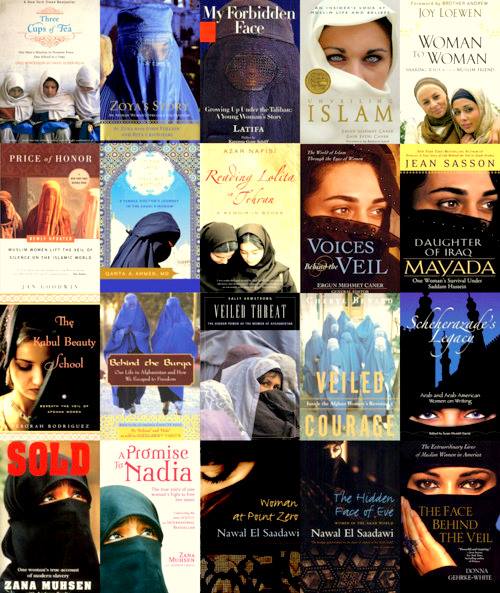From Laila Lalami: Titles of most books on Muslim women: Behind the Veil, Under the Veil, Secrets of the Veil, The Veil of Silence, True Stories of the Veil. All of them, of course, illustrated with the requisite face veil.
…
What Edward Said would say.
…
Nothing symbolizes this distinct otherness more than the veiled woman, as Myra MacDonald highlights in her article “Muslim Women and the Veil.” MacDonald notes that the veil has been a fascination with Western imperialists since their first footsteps on Eastern soil. The veil represented something mysterious, an image of a frail yet sexualized woman who was hidden from the gazes of outsiders (men) and yet, who could see without being seen. If we consider this juxtaposition through Laura Mulvey’s concept of the gaze, the veil restricted the agency of the imperialist powers by limiting their ability to gaze onto and thus control the covered women. Further, because access (visual and other) to Eastern women was off limits to European travelers, unveiling the covered woman became an obsession. MacDonald writes:
The desire to penetrate behind the veil was intensified by the “scopic regime of modernity” that privileged seeing as the primary route to knowledge. It was characterized by a desire to master, control and reshape the body of the subjects by making them visible.
As a result, MacDonald notes, Western imperialists took it as their imperative to “rescue” women from the domination of Arab men. Rhetorically speaking, this liberation could only come by uncovering the women themselves, giving them freedom through exposure like their Western sisters. Yet, it is important to note that during the height of imperialist activity in the Middle East, Western woman were similarly denied many political, economic, and social freedoms. More here.

